- How to clean the chimney?
- Useful Tips
The efficient operation of a wood-burning stove will depend on the condition of the chimney structure. Every owner of a private house should be able to clean the chimney.
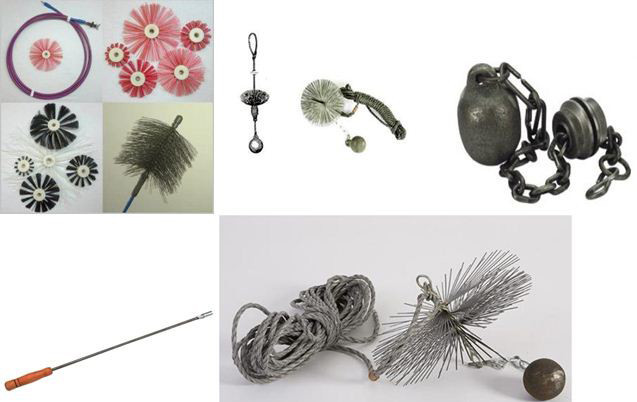
When lifting onto the roof, tie the tools to the belt. If you are installing on a roof, check that the access path is tight and that the door or accessory is not released. In any case, take all the precautions when you fall from a height, this is life!
Move the chimney slowly up and down. When cleaning the top rope, lower the machine or brush and then pull it back. Add separate parts of the rod and gradually expand it. When cleaning the chimney, first carry out upper part chimney, then the bottom. As you push down on the rod, notice any electrical wires above the chimney. If the chimney is too heavy, repeat the procedure.
Figure 1. Tools for cleaning the chimney: metal brush, brush with metal bristles, holders, scraper.
Professional stove makers believe that a properly installed and equipped chimney can be clean for many years if it is operated in accordance with all existing rules.
If the stove is fired with dry wood without a high resin content, the blower will be regularly cleaned of ash, various debris will not be burned in the stove, then you just need to periodically remove soot from the cleaning holes that are located in the room.
Scrub the brush or brush in the chimney. Clean the chimney in your yard or hallway. If flue gas has to be removed, remove it and clean it with a spray trap somewhere where it doesn't matter, less contamination. Read the sediment from the pipe. Also clean the hub - the place where the chimney connects to the chimney. Chimney pipe that cannot be removed, clean the door.
Remove the soot from the bottom door. At least once a year, you must remove the sediment attacked at the bottom of the chimney. It serves as a door underneath the oven or boiler connection. Prepare a flask from non-combustible material, a brush with a spatula and a mask. If the lower part of the chimney is in the apartment, it is better to buy or take an industrial vacuum cleaner. Choose carbon only after the heating season, they are extremely flammable. Take them to the collection garden, they are hazardous waste.
You should know that the chimney structure must be revised 2 times a year. This must be done in order to find out the condition of the chimney structure. You will need to remove not only soot, but also debris flying from the street, cobwebs, bird nests, and so on. Speaking about how and when to properly clean the chimney, you need to know that this task must be solved depending on how much the chimney is overgrown with soot.
If you find a tasting, call the chimney instead. If you find a little crushed mortar or brick when choosing soot, it may not be a big mistake. Only call the builder when the chimney is tilted, cracked, or bursting over the roof. But if you find sticky tar, call the chimney instead. The thing is dangerous and flammable. Chimpanzees usually burn it professionally.
Professional chimney cleaning: fast, reliable and expensive
Remove all packages and try swimming. After cleaning, be sure to remove all packaging and slabs. Then flood to check that the chimney is twitching well. Combined rope / rope or chimney with scraper brush and adjustable rod. Machine with sun can be cleaned from above. It is also possible to remove lightly baked tar from the chimney wall. Brush brushes on a flexible rod are cleaned from above and from the chimney. But better for shorter chimneys. The brush can also be used to clean the chimney - pipes from the boiler to the chimney.
Reasons why you need to clean the chimney:
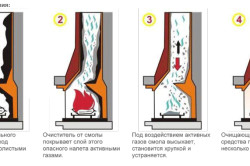
Figure 2. Diagram of the cleaning principle.
- Providing good traction. The soot that settles on the walls of the chimney will partially reduce its clearance. For this reason, the smoke cannot pass freely through the chimney. A thick layer of soot will keep the walls from getting warm. This leads to falling into private house smoke, reduced draft and stove efficiency. If there is poor cravings, you can easily get poisoned by carbon monoxide.
- Safe use of the oven. At high temperatures, soot can catch fire and cause cracking of the walls of the chimney structure, and this leads to its destruction. Sparks from hot soot that pop out of a chimney can start a fire.
How to clean the chimney?
First of all, you need to figure out which tools to buy. The main device of the chimney sweep is a metal brush, which has a large diameter. For square structures, it is more convenient to use a brush with stiff metal bristles.
Sunsets and brushes should be the same diameter as the chimney. Observe the label on the packaging whether it is suitable for a chimney with a ceramic or stainless steel liner. Buy a chemical cleaner, use protective equipment including a mask, and take a viewing mirror. You can buy bags at a pharmacy or a store for about 100 CZK.
Why is it important to clean your chimney regularly?
We provide comprehensive chimney cleaning. The flue gas cleaning process is mainly to remove deposits and impurities from the chimney, chimney and other equipment installed on the flue gas. A dirty chimney significantly reduces the efficiency of the appliance, i.e. more fuel burns to obtain the same heat as when the chimney is clean. When a garden chimney is supplied, the risk of fire is increased, as soot can start burning in the chimney.
If, during the cleaning process, the brush will fall down on the rope, the brush should be equipped with several flexible holders that will be connected to each other.
You will need to purchase a scraper and a bucket.
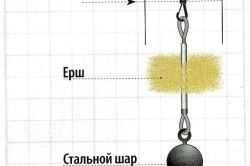
Figure 3. Diagram of ball cleaning.
Do I need to clean chimneys connected to gas boilers?
Owners of gas boilers often neglect flue gas cleaning because they believe that chimneys are not involved in combustion. However, even in these stacks it forms combustion residues that can interfere with the surface of the stack of inserts, and in some cases such inserts distort in such a way that the chimney is clogged and further the possibility of high toxic carbon monoxide leaking into the living area. The chimneys are also dirty and contaminated with airborne dust, condensation, etc. it can be said that in order to ensure sufficient safety, it is important that these flues are checked and cleaned at least once a year.
Elements required for work:
- metal brush;
- brush with metal bristles;
- ruff holders;
- scraper;
- heavy round bucket;
- additional cleaning agents.
A standard set of cleaning accessories can be seen in Figure 1.
Back to the table of contents
Cleaning the chimney pipe using folk methods
Many stove-makers use folk ways cleaning, because cleaning work is dangerous.
What problems can arise when cleaning a chimney?
Photos of the most common defects are here. We often face situations where the chimney cannot be cleaned at all. The reason is that the company that lined up in the chimney did not follow the path of the chimney through the viewing holes. If you want to insert a chimney, always ask if these control pieces are included. The chimney, which will not be cleaned over time, needs renovation.
Can a person clean a chimney alone?
If it is a chimney connected to a solid fuel appliance, it can independently clean this chimney... However, he must also check the chimney path by a competent person at least once a year. The tools you need to clean your chimney are sold in shops or hobby markets, of course with specialist companies, and you can get them online. A thousand crowns will be enough for you.
- The most common way is to sprinkle rock salt on the wood while burning. You should know that this salt is most often used to prevent the appearance of soot.
- Potato peels can help remove plaque from chimney walls. You will need to heat the fireplace well, and then put a lot of potato skins into the fire. The steam that will be released will be able to decompose the soot that enters the chimney. Heavy pieces will fall into the stove and need to be cleaned. It is worth noting that cleaning with potatoes is not complete, but only as a means that helps to soften the soot and make it easily lag behind the pipe walls. After similar preparatory work you will need to clean the pipe in the usual manual way.
- If there is aspen firewood, then cleaning the chimney is quite simple. To do this, you need to burn a certain amount of armfuls. This method is unsafe, because cleaning is carried out due to obtaining a high temperature in the chimney structure, at which the soot will begin to burn. If you plan to use this method, you should make sure that the chimney can withstand heavy loads and not be damaged after that. If there is a large layer of soot deposits in the pipe, it is recommended to take risks and use a safer and simpler method.
Back to the table of contents
Chimney and rope sun by car or chimney with cleaning brush and adjustable dust cover. The lighter is used to clean the chimney only from the top. You will also clean tar-stained light from the chimney wall. The chimney can be cleaned from above and below with a brush on a flexible rod. This tool is more suitable for shorter chimneys. You can also clean the chimney with a brush, The pipe that connects the boiler to the chimney.
Pipe cleaning methods
Before you start working with the tools, decide whether you will be cleaning the chimney from the roof or from the bottom of the chimney. Cleaning from above is higher, but the condition is the possibility of a safe exit to the roof. If access to the chimney on the roof is unsafe, use the chimney in the attic to clean it. In the case of shorter chimneys, i.e. up to six meters high, you can also use the bottom door.
How can you clean your chimney manually?
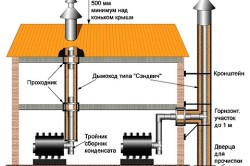
A chimney sweep, who has extensive experience, will be able to clean the chimney pipe qualitatively, and will also revise the structure for cracks, evaluate the operation of the heating device and the presence of traction.
Both the brush and the sun you are going to clean must be the same size as the chimney diameter. The type of chimney is also important when choosing them. You will find out on the packaging of the tool whether it is suitable for your fireplace. When you have everything you need, you can start cleaning yourself.
Burn the chemical cleaner in the oven. ... The goal is to break down the soot in order to keep the chimney clean. You can use, for example, the cleaning block or the Chimney soot remover. Allow the chimney and boiler to cool before cleaning. It is enough if you stop heating up overnight and the chimney is cooled down in the morning.
Today there are many people who are able to take care of the oven themselves. It is imperative to know how to clean the pipe so that the work of the stove does not bother those present.
The sequence of work on cleaning the stove is as follows:
- First you need to close all the cleaning holes in the house. This must be done to prevent soot from flying into the room. The oven door also closes. If the stove is open, it is recommended to hang a wet cloth on the firebox.
- Chimney cleaning is carried out exclusively in dry weather, and there should be no wind. You will definitely need to use insurance.
- If the stove has not been used for a long time, the first step is to make sure that there are no bird nests in the structure. If you cannot get the nest or debris from the top of the structure, you will need to push it down with improvised means.
- The chimney must be cleaned if the soot layer on its walls is more than 2 mm. If there is a smaller layer, a complete cleaning can be omitted. In this case, you will need to use alternative methods.
- If the soot layer is thick enough, you will first need to scrape it off with a scraper. Only then is a brush or ruff used.
- During the cleaning process, a blockage may be found in the chimney structure, which will prevent the tool from going further. It can be any rubbish or brick that has fallen off from the masonry. If the chimney has not been serviced for a long time, then the probability of finding garbage in it is quite high. The jam will need to be pierced with a heavy steel ball, which is secured with a carabiner on a rope. He throws himself into the center of the hole in the chimney structure, while trying not to touch the walls of the pipe.

Why do soot deposits and blockages appear?
Remove the cover or chimney head, insert the door from the stove and secure the floor. ... The door from the stove must be closed and clogged so that soot does not spill out of the stove while cleaning the chimney. If you have an open fireplace, unfold a piece of paper or paper around it. When cleaning the chimney door, there must be a non-combustible floor next to it.
Chimney soot cleaners
Tie up your tools before going up to the roof. ... You will avoid such an unpleasant situation when the tools fall. The rope with the cleaning tool is best placed over your shoulder and the sticks that you carry in your hand are tied together. Work slowly, otherwise there is a risk that deposits will be pumped out of the oven.
A brush with a load is lowered into the chimney, it strips off the soot and removes foreign objects.
It is necessary to choose a core diameter that can cover at least 2/3 of the chimney section.
The core can be used not only to clear congestion, but also as a weighting agent for a brush or brush. The cable, brush and core must be connected to each other with carabiners, which allow you to change the design by removing any section from it. The cleaning scheme is shown in fig. 3.
If you peel from the top, lower the rope with a brush or brush, then pull it back. Extend the cleared path gradually. If you clean the bottom of the chimney, first clean the top of the chimney and then the bottom. If there are electrical wires above the chimney, be careful when pushing down on the bar.
If the chimney is too heavy, repeat the process again. After cleaning, clean the brush or blow into the chimney. Remove the flue gas pipe and take it out and clean with a brush. Choose a place where you will not be disturbed by deposits that will pour out of the chimney. Clean up the soap.
Instead of a core, it is not allowed to use weights for sports or any other objects that have a large weight and an offset center of gravity. Such objects can turn over and get stuck in the chimney for a long time. To remove the jammed objects, you will need to dismantle the structure.
Open stoves with a direct chimney can be cleaned not from the roof, but from the side of the firebox. To do this, you will need to use the metal brushes on the extension handle.
The smoke cannot be removed, you will clear the door. Remove soot from the bottom of the chimney. ... The door under the connection point of the boiler or stove must remove deposits from the bottom of the chimney at least once a year. Apply the mask, brush and blade and flask of non-combustible material to the soot.
Chimney cleaning rules
If you work in an apartment, it is preferable to use a vacuum cleaner instead of sweeping. Either you can borrow it or buy it yourself. Carboys are highly flammable and should be taken to the collection yard as hazardous waste. It is also recommended to choose them only after the end of the heating season.
Once the oven has been cleaned, you will need to carefully open all the cleaning holes and remove any existing dirt with a brush and scoop or soot spoon. Soot residues can be removed using a household vacuum cleaner.
At the end, the fireplace insert and the blower are opened and cleaned.
Back to the table of contents
How to clean a chimney using chemicals?
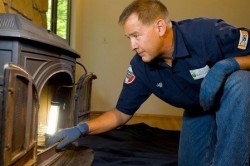
Once you clear the chimney, make sure it floods well. Remember to remove all packaging and stoves. When cleaning, you may come across a bit of brick or mortar. There shouldn't be any glitches. But if you find sticky tar, be sure to call the chimney. The bumps usually burn it off. The tail is dangerous because it is very flammable.
If the chimney is cracked or tilted, or if it bursts over a roof over a roof, call your building contractor. If we want to find the origin of the word "cottage", it will not go without looking at the conclusions of the etymologists. Etymology is a linguistic discipline that studies the origins and development of words. The tools you need to clean your chimney are sold in shops or hobbyists, of course, from specialized companies, and you can get them online. During your absence, there is a great danger to your home, company, cottage or cottage. Especially in the case of sporadically populated properties, this can be a real problem. The best defense of a cottage against intrusion by foreigners is, in addition to the security elements that make it difficult to enter the cottage, a suitable electronic security system. She analyzed the mortgages provided to them and identified the groups who buy real estate today. These cottages and cottages are not just retirement domains. About half of the thefts of houses and cottages registered by the police force foreigners to enter the building at the door. This is about 0.5% more than in the case of permanently occupied objects. The season starts with huts and cottages, as well as those who are interested in buying this type of property. There are many reasons to buy it. We will look at this now from an economic point of view. Even the police control the cottage, summer cottage and gardening settlements and colonies when the raiders start harvesting. If you choose well, you don't need to worry about anything, but just make decisions and subscribe. Here we will tell you how to continue buying or selling cottages and cottages through a real estate agency. With the amendment to the Waste Act that President Klaus signed today, the cottage and cottage owners will again slightly increase their cottage, apartment and / or cottage. If you buy or own a cottage or cottage for recreational purposes, then this is a new decision of the Supreme Court, which is not a reason to terminate the lease of the apartment. Recreational mortgages are provided by all major banks. But, for example, four-bed cottages in the Podkrkonosze standard can be rented for 800-900 kroons per day. IN last years a growing number of Czechs want to experience their "little different" holiday and therefore want to experience the unique atmosphere of Scandinavia and its cottages and cottages in local style. Take a vacation at the dacha. - Czechs regard the castle or cottages as a purely Czech phenomenon. How about the Czechs' relationship with their second homes, as the chalets and cottages are called, and in fact it refers to the hunting associated with it. Not everyone wants to spend their vacation at a hotel or camp. Mice move to a cottage or cottage mainly for food. A rental cottage or cottage vacation is a good compromise between camping and staying in a hotel or guesthouse. This applies to both prices and comfort. Furthermore, Easter is more of a festive season than Christian holidays. For a weekly cottage or cottage rental, a family of four will rent out as much as they pay for a cheap one-person weekly seaside stay. Just after the Swedes, Czechs are the second largest country in the world in terms of the number of chats per inhabitant. Every fifth residential building is used for recreational purposes. Combined with the interior, this means a cottage, rural. The cottage-style interior exudes the casual resort atmosphere. Then the question arises: can you solve the problem yourself or is it better to contact an expert. Twice this is especially true with the advent of spring. Assuming that during the first spring you are staying in a cottage or cottage, you will mostly be resting. Most of Šumava and Bohemian Paradise. - More and more Czechs decide to spend their holidays in the Czech Republic. The most interesting are the rent of cottages and cottages or other forms of residence in South Bohemia and Šumava, and then Bohemian Paradise, Jizera and Krkonose mountains. There are many more people who want their own cottage or cottage. About the origin of the word "cottage" - about the origin of the word "cottage". ... Carbon black appears on the glass if the combustion temperature is too low or when a sufficient layer of hot material does not form during heating.
When dry cleaning the chimney, the package with the agent is placed in the fire of the furnace, after which the door is tightly closed.
From time to time it is recommended to use prophylactic agents. This allows you not to think in the future about the need to clean the chimney. These products are chemicals that come in liquid form. It will need to be added to the firebox while the wood is burning. When burning, it will emit gases that do not cause any harm to humans. These gases will shower deposits from the chimney walls.
The most effective and common chemicals are:
- Composition against carbon deposits. This powder is intended for cleaning the chimney structure. It will need to be burned in a package along with fuel. The consumption of the product is normalized: for 1 ton of fuel, you will need to use 100-160 g of powder.
- Kominichek. 1 package contains 5 sachets of 15 g each. This amount is enough for 3 months of maintenance work. It is recommended to use Kominichek if there is a small layer of soot. The maximum layer thickness is 2 mm. The tool will remove soot and soot. With its help, a reaction will be triggered in which the soot turns into an oxide that can burn at low temperatures.
- It is quite simple to use the product: 1 sachet is placed in the firebox on the burning fuel, after which the door is closed. Due to the effect of high temperatures, the granules will release substances that are capable of dissolving soot on the walls of the furnace and in the chimney structure.
- Log. A product that is a small briquette or block. During combustion, volatile substances are released, which can reduce the thickness of creosote deposits on the pipe walls. The sediments will dry up and crumble into the furnace. The cleaning principle can be seen in fig. 2.
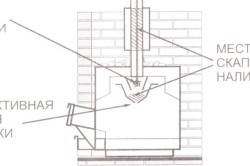
Wood is the most popular chemical. The tool allows you to reduce the risk of creosote deposits, prolongs the service life of the chimney. The timber can be used in all types of stoves and fireplaces.
If the stove is heated several times a week, then it will be enough to burn a log once every six months. If the stove is used daily, you will need to burn 2 blocks in 1 season. If you need to clean a wood-burning stove that is used during the heating season, you will need to burn a log in it once every few months.
In order to be able to achieve maximum cleaning efficiency, it is necessary to put the log on the hot coals left over from the previous firebox. If the timber does not burn, the wrapper should be set on fire from 2 sides with a match.
The additives that are part of the bar remain active for several weeks. During this time, the soot will fall into the furnace, breaking away from the pipe walls. After 2 weeks, you will need to clean the firebox, inspect the knee and pipe, and then clean them of the waste that fell out. The smoke damper also needs cleaning. Use a vacuum cleaner or a fireplace brush to clean.
Before purchasing any chemical, it is important to carefully read the instructions for use and the manufacturer's advice regarding the use of the agent in various types of heating devices. Not all products are universal, some are allowed to be used only in closed fireboxes or stoves that run on wood.
Many residents of private houses are interested in the question of how to clean the chimney from soot folk remedies... Due to accumulations of soot, the release of smoke is difficult, there is a possibility of intoxication of the people living there. Therefore, from such a problem as fumes, black soot in chimney, we must get rid of.
Simple cleansing methods
A layer of soot on the thick walls of the chimney affects the quality of the furnace itself and safety. Heavy waste accumulates inside, can enter living rooms, and soot particles deposited on the chimney can be flammable and provoke an accident. All this can be avoided by timely cleaning the chimney near the stove; you can do this at home on your own.
The easiest method to clean your chimney is with traditional table salt. These manipulations are of a preventive nature, because they will not help to clean a thick burnt layer, but they will be able to remove fresh layers of soot and soot. With regular use of this simple technique, carbon deposits reappear over a longer period.
The essence of this easy way is as follows: it is necessary to add a handful of kitchen salt to dry firewood. At the moment of combustion, it is she who is able to influence the chemical processes taking place inside the furnace, as a result, soot does not settle on the pipe walls so quickly and intensively. This method of cleaning a pipe is most effective only if it is not yet completely clogged with a layer of soot.
A second risky method of cleaning the oven passage is to completely burn off any existing deposits on the pipe walls. It is done with an emphasis on chemical composition soot in stove flues. The whole point is that the oily compounds deposited on the walls of the furnaces are not completely burned out heavy chemicals that have not been processed due to a lack of oxygen. Therefore, if you heat the firebox to the required temperature, the soot inside burns out by itself, without the need for additional manipulations.




